Sarasota mantle boaters were surprised when a great white shark swam toward them and showed off its pearly whites before eating a whale carcass just yards away.
Video captured by Brian Jung and Daniel Delatorre on March 17 shows the shark gliding up to a boat that was 15 miles offshore in 50 feet of water.
The animal’s jaws are opened, revealing rows of sharp teeth as guests aboard the boat exclaim. A closer look shows the shark’s body marked with scars.
“It’s going to eat our engine,” remarks a woman as the animal nudges the boat.
He then swims up to a bloated whale carcass floating in the water and begins taking huge bites before abandoning this pursuit and swimming to another boat.
A man who films the encounter with his smartphone puts his hand in the water and tries to stroke the animal’s head.
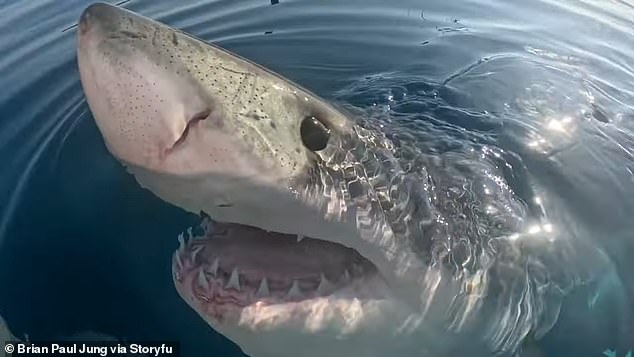
Boaters off the Sarasota coast were surprised when a great white shark swam toward them, flashing a toothy grin.
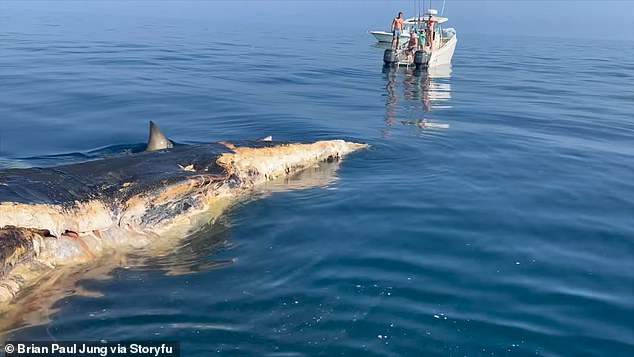

The shark was most interested in a whale carcass floating above the water.
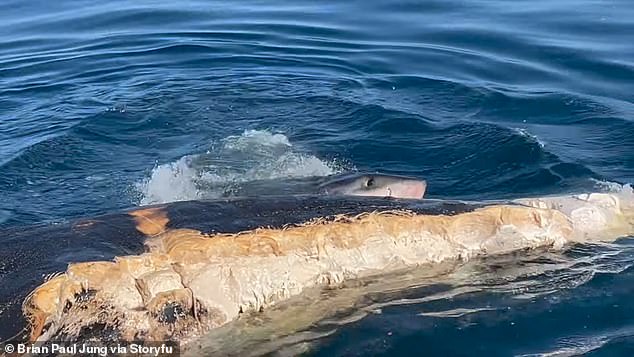

After gnawing on the blubber, the shark headed towards another boat.
Jung said WFLA that a total of three sharks, not captured on video, were seen feasting on the carcass.
The dead sperm whale had been towed back to sea after running aground near Venice on March 10.
Authorities determined it was an adult male measuring 44 feet long and weighing approximately 35 tons, or 70,000 pounds.
As its breathing became more difficult throughout the day, officials said they did not expect the whale to survive. He died around 3 a.m. on March 11.
“Obviously this whale wasn’t feeling very well and wasn’t doing very well being so close to shore and in this kind of condition,” said Laura Engleby, chief of the Marine Mammal Fisheries Branch of the NOAA, Southeast Region. WFLA.
The whale was emaciated and covered in wounds from suspected attacks by other male sperm whales.
Shortly after his death, researchers from the Florida Fish and Wildlife Conservation Commission cut up the carcass to take samples for the necropsy, drawing a crowd.
Its blood colored the water of the Gulf of Mexico, prompting authorities to issue a no-swimming advisory due to “possible increased predation activity” in areas south of Venice Beach. The advisory was lifted on March 13.
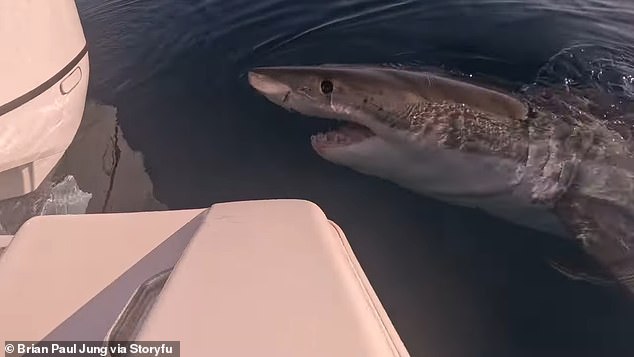

Great whites are about four feet long at birth and can grow up to 20 feet long.
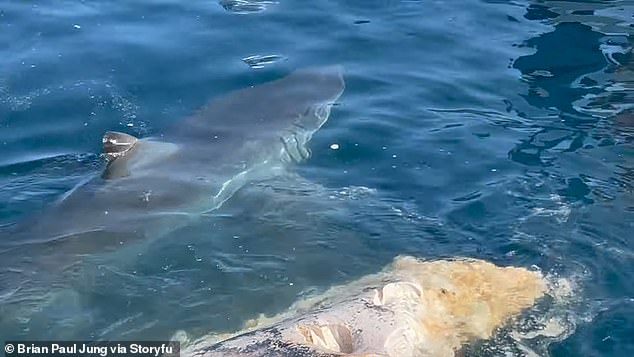

In total, three sharks, not all seen on video, were feasting on the carcass, according to the cameraman.
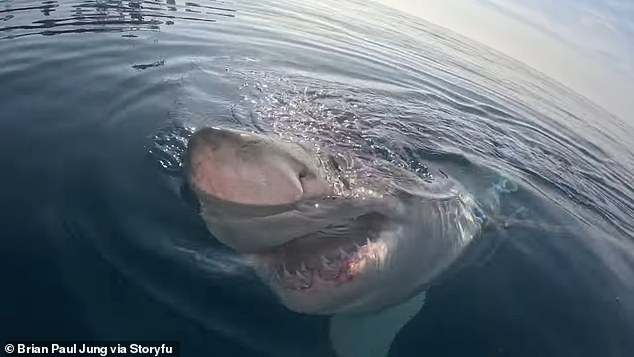

A sighting of great whites is not uncommon off the coast of Florida, as their range extends from Maine to the Gulf of Mexico and the American Caribbean.
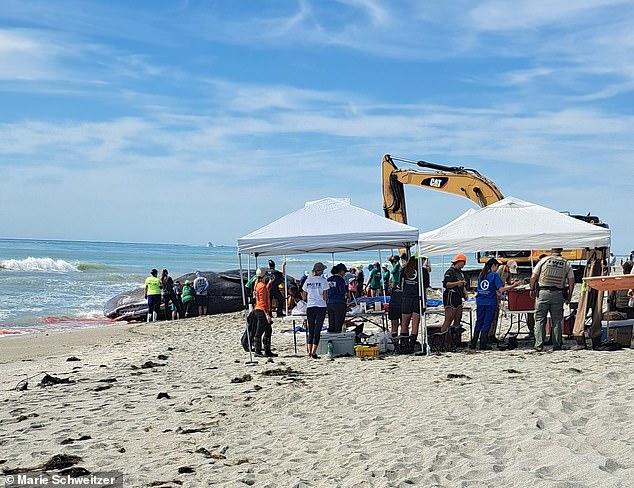

The sperm whale ran aground on March 10 near Venice. It was emaciated and covered in marks from apparent attacks by other whales.
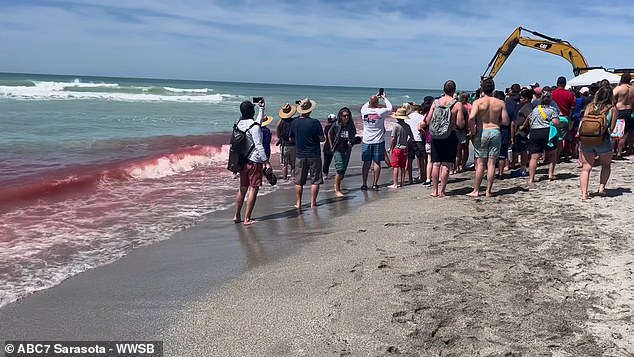

As wildlife officials cut up the carcass to prepare samples for necropsy, blood filled the water, leading to a no-swimming advisory.
It is extremely rare to see a sperm whale in the southeastern United States. According to Engleby, researchers see about two per year.
The last sighting on the Gulf Coast was recorded in 2008. In 2022, a hungry 47-foot male washed up in the Keys.
The whale had consumed waste that prevented it from eating its usual diet of squid, sharks and fish.
These are the largest toothed whales in the world. They frequent deep water and can dive to depths of more than 10,000 feet.
Females can reach 40 feet long and weigh 15 tons, while males can reach 52 feet and 45 tons.
Despite their enormous size and considerable lack of predators, they face a different threat than humans.
Their population is increasing after being heavily hunted in the 19th century for a waxy substance contained in an organ in their head called spermaceti. The substance was historically used in lamp oils, candles and lubricants.
To date, sperm whales face risks such as ship strikes, fishing line entanglements, ocean noise, marine debris and the effects of climate change, according to NOAA.
Great whites are about four feet long at birth and can grow up to 20 feet long.
It is not uncommon to see one off the coast of Florida. Top predators range from Maine to the Gulf of Mexico and the American Caribbean in the Atlantic.
